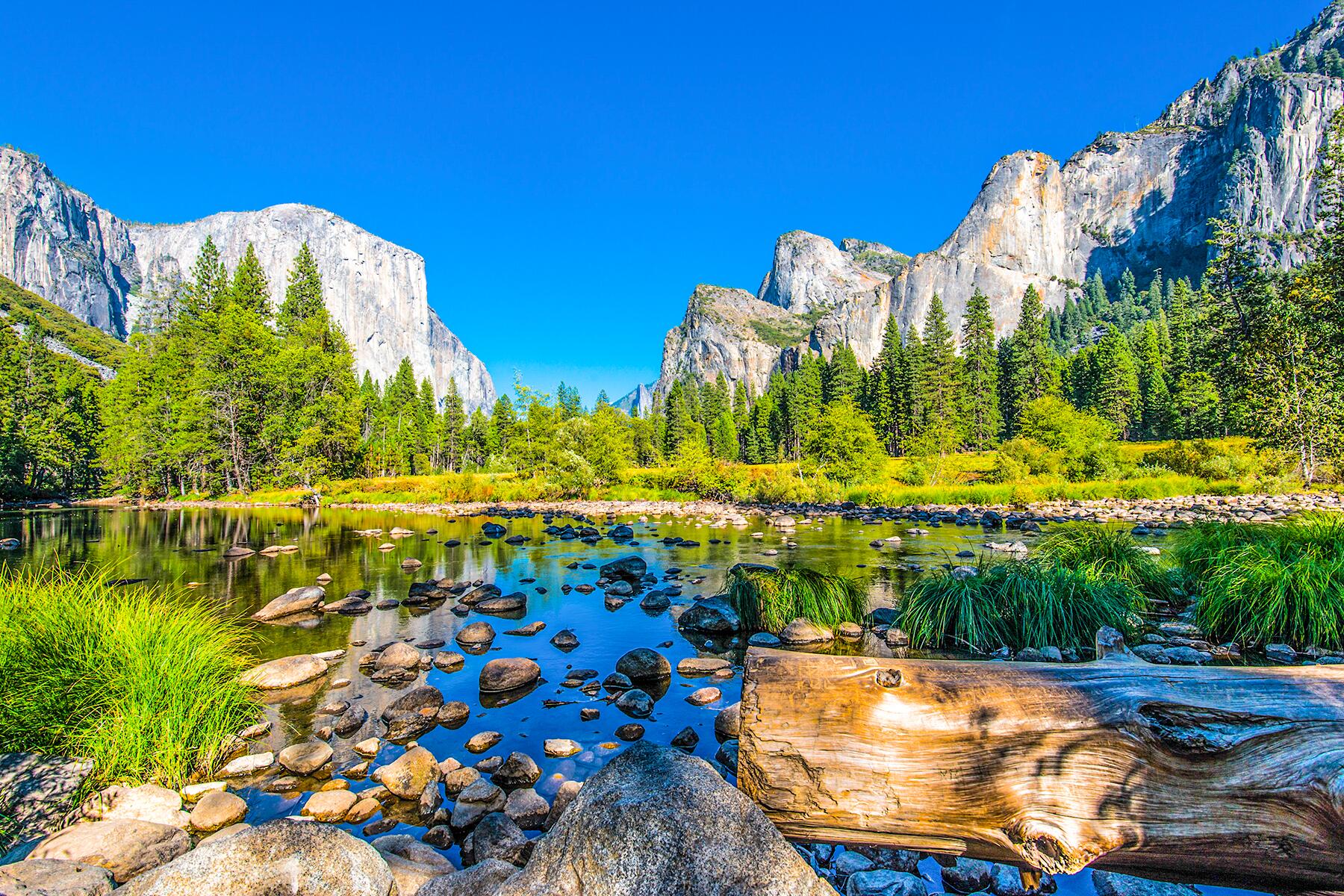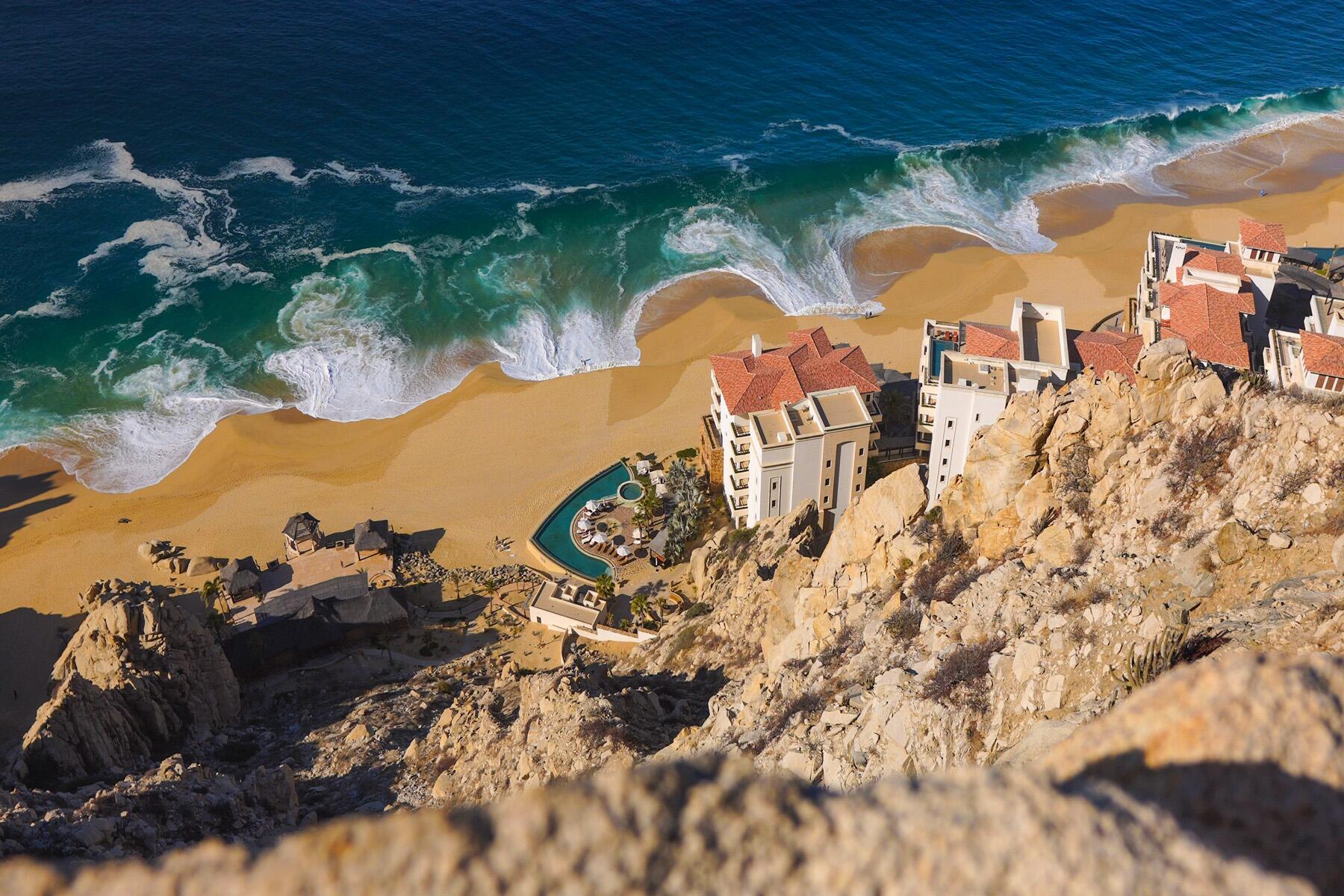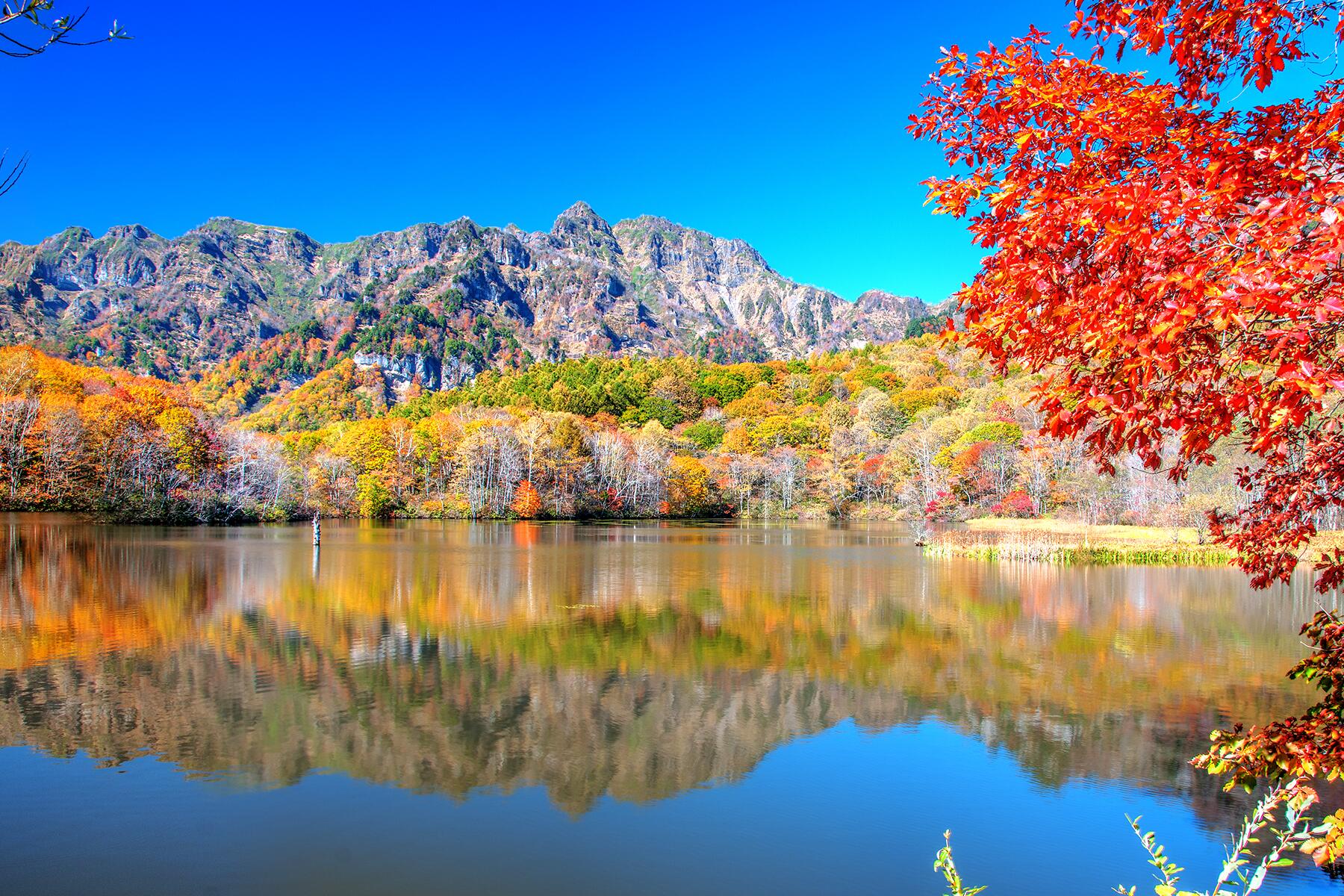It worked, I’m *calm.*
HBO Max recently unveiled a new show from the makers of Calm, the meditation app that’s taken the world by storm these last few years. The app’s content is designed to help users breathe their stress away and get a good night’s rest. Naturally, the brand’s first foray into content on a major streaming platform—titled, A World of Calm—is designed to do the same, this time providing viewers with 10 documentary-style episodes—each less than 30 minutes—that utilize the voices of famous actors to describe specific destinations around the world in beguiling detail. Each episode is relaxing and breathtaking, but nevertheless, we’ve made it easy for you to dive in by ranking them from least calming (the equivalent of a glass of wine after a long day) to most calming (the full Xanax experience) so you can easily tune out the chaos of the world and settle your nerves way down.
Top Picks for You
Episode 9: "The Gift of Chocolate"
WHERE: Central America
Episode 9 takes us to the tropical rainforests of Central America—home to some of the world’s most impressive ecosystems—for a deeper look into one prized gift from nature: the cocoa tree. In this episode, voiced by Priyanka Chopra, we are given an in-depth look at the tree and its fruits, or pods, which are harvested for what will eventually become, you guessed, chocolate. Chopra describes the tree’s life, its environment, and the workers who make it all possible in thoughtful detail—and there are, in fact, a few close-ups of chocolate being liquefied that are particularly satisfying. But, compared to the rest of the episodes of the Calm series, I found “The Gift of Chocolate” to be a more technical (albeit very interesting) showcase of how chocolate is made, rather than an episode complete with sweeping vistas that immediately transport me to another place. With that said, Chopra does touch on the origins of cocoa as it relates to ancient Mayan cities and how it was once valued as a currency and “consumed to honor rites of passage and used to celebrate life.” Paired with these talking points are some great shots of ancient Mayan structures.
Episode 8: "A Horse’s Tale"
WHERE: Sable Island
The star of the episode narrated by Academy-Award winner Kate Winslet is…well, it’s actually horses. But the most notable environment from “A Horse’s Tale” would be Sable Island, a small strip of land near Halifax that is mostly known for being populated by large numbers of wild horses. With its extreme winds and lack of freshwater, the island’s environment is harsh, but the horses have learned to adapt and dig underground pools to drink. So, yeah, unfortunately, the geography of the island isn’t really anything to write home about, but—and apologies for burying the lead—Sable Island is also home to the largest colony of gray seals in the world. Their droppings are what turn the sand into soil, which makes the land more habitable for the horses (honestly, tune into this episode for the shots containing both the horses and the seals alone). Additionally, “A Horses Tale” looks at other harsh locations, like the Yakutia Region of Russia and the deserts of Arabia, where horses have adapted to live full time—according to Winslet, the bodies of the Yakutia horses produce a type of ant-freeze that allow them to survive in the intensely cold climate.
Recommended Fodor’s Video
Episode 5: "Living Among Trees"
WHERE: Latvia
Keanu Reeves takes us to a woodshop in Latvia this episode to meet a woodsmith named Rihad. The shop is chock full of woodland crafts and we see almost no machines, just Rihad’s hands “conversing with the tree,” as Reeves says, as he works his magic. Rihad is certainly one of the standouts of this episode, next to the overhead shots of regional trees as Keanu (whose voice isn’t as silky as I’d hoped it would be in this series) talks about how they are connected by a single web of fungi so they can talk and share food. Definitely tune in if you’re an avid leaf-peeper, or if you’re curious about John Wick’s gentler side.
Episode 3: "The Bird’s Journey"
WHERE: The United States (Generally)
Nicole Kidman, the voice behind this episode, sure does know her birds, and she uses her iconic Australian cadence to explain that the migration journey of some of them, like snowbirds. We learn that these birds can cross an entire continent in just a few days, and when Kidman describes the details of the continent—for example, she refers to the Mississippi River as a “giant road, pointing the way home”—you feel it in your bones. The genius of this episode lies in the camerawork, as we’re often placed in the bird’s POV (or, right beside it). Shots of the Grand Canyon, Niagara Falls, and more will simply blow you away (or pleasantly put you to sleep!). We also get a great look at flamingos in Kenya.
Episode 10: "Water, Giver of Life"
WHERE: Namaqualand
Mahershala Ali discussing water as it pertains to the element that lives inside everything in Africa is very, very calming. This “finale” explores the terrains on the continent and how they’re aided by water. It’s a great showcase for Victoria Falls on the Zambezi River; “water soaks everything here,” Ali says, noting that local people call it mosi-oa-Tunya or “the smoke that thunders.” Ali goes on to point out that, “oceans hold over 90% of the earth’s water, so naturally the majority of life on the planet lives in the mysterious deep,” which is quality dream material if you’re using this show to get some shuteye. Most memorably, though, is South Africa’s Namaqualand, which is the most biodiverse desert on Earth. The episode shows the blooming of the area’s flora after a seasonal rain transforms the dry fields.
Bonus quote from Mahershala Ali that I can’t stop thinking about: “Water is a shape-shifter…it can float freely as rivers in the sky.”
Episode 2: "The Glassmaker"
WHERE: Venice and the Netherlands
OK, so maybe this episode sticks out in my mind the way it does because I really don’t know much about glassblowing, or didn’t, at least, before watching the episode. Zoë Kravitz takes listeners through locations like the waterways of Venice and the Netherlands as she describes the process of glassmaking and just how big of a role the elements—earth, wind, fire, and air—play in it. The establishing shots on display here, including ones involving lava and travelers on camelback as they cross dunes, are nothing short of magnificent.
Episode 6: "The Great Beyond"
WHERE: Space
“What’s the difference between this and every other space documentary?” you ask. Idris Elba, saying, “In every moment we are surrounded by wonder,” then proceeding to talk about light years and wonder and voyages and dreams for approximately 30 minutes, that’s what. Healing! Elba initially takes viewers 250 miles from Earth to the International Space Station—“our first permanent home in the cosmos”—and then moves 746 miles from Earth, and then 40 light-years, and then 20,000 light-years, each time giving us a glimpse at what these locations look like (or might look like). It’s certainly wondrous. And the fact that Saturn has 82 moons is, quite frankly, crazy. So yeah, this Terrence Malick-like episode based around space (a classic destination!) is absolutely worth tuning into.
Episode 1: "The Coral City"
WHERE: Raja Ampat, Indonesia
In many ways, this episode is instantly iconic. Just to name a couple of reasons: it’s voiced by Lucy Liu (!), and its primary focus, the coral reefs of Raja Ampat in Indonesia, are never not stunning. “Dawn has broken in Raja the same way for millions of years,” Liu says as the episode begins and your blood pressure immediately drops. The episode paints the coral here as “an underwater metropolis,” which it is, but seeing the community in such high definition and through the eyes, albeit briefly, of a sea turtle is remarkable, as is seeing a baby sea horse wrapping its tail in the nook of coral as it takes shelter. At one point, the Charlie’s Angels star says, “Time has worked its magic here.” And, to be clear, this episode absolutely captures that magic.
Episode 7: "Noodles"
WHERE: The Japanese Alps
This one’s a story about one of the world’s most comforting foods—noodles!—as told by Oscar Isaac. While no one knows where noodles officially came from (Italians insist they invented pasta), many believe they popped up in Eastern China 4,000 years ago. “Every noodle has a tale to tell,” Isaac says.
He first takes us to Seattle to the home of a Japanese woman who is carefully preparing Soba noodles. It’s an art and a ritual—one of the key essences of the noodle is cherished buckwheat—and is treated with great reverence in Japanese culture. While she continues to mold the comfort food, we are whisked away to the stunning Japanese Alps, the location of the world’s most famous buckwheat (the waters that come from the mountains nourish the wheat greatly). At this point in the episode, there’s a near-religious tracking shot of a waterfall and you realize how awesome it is that noodles have brought you to this place. Incredible.
Episode 4: "Snowfall"
WHERE: Northwestern Canada
“Do you remember the first time you saw snow?” asks actor Cillian Murphy as the best, most calming episode in the series starts. I, unfortunately, do not, but this episode awakened a childlike sense of wonder in me, with its incredibly detailed (we’re talking microscopic) look at individual snowflakes. You get to see them grow and branch as water vapor freezes around dust. The sublime melancholy on display is expertly enhanced as Murphy says things like, “each snowflake is a letter from the sky” and “pillowy air pockets in the snow absorb sound” and you watch thousands of letters pour onto fields in Canada’s Northwest region. Also featured in the episode are adventurous skiers searching for that perfect slope where the trek downhill will make them feel like they’re floating, as well as a boy and his honorable sled dogs, and a snow artist who uses his tracks to paint a picture (which initially begins as a scaled drawing) in the icy landscape.
Fun fact: Did you know there are types and textures of snow? For example, this episode explores “aputi,” which is the snow that rests on the ground, and “sitilluqaaq,” or a drift of snow after a storm.




